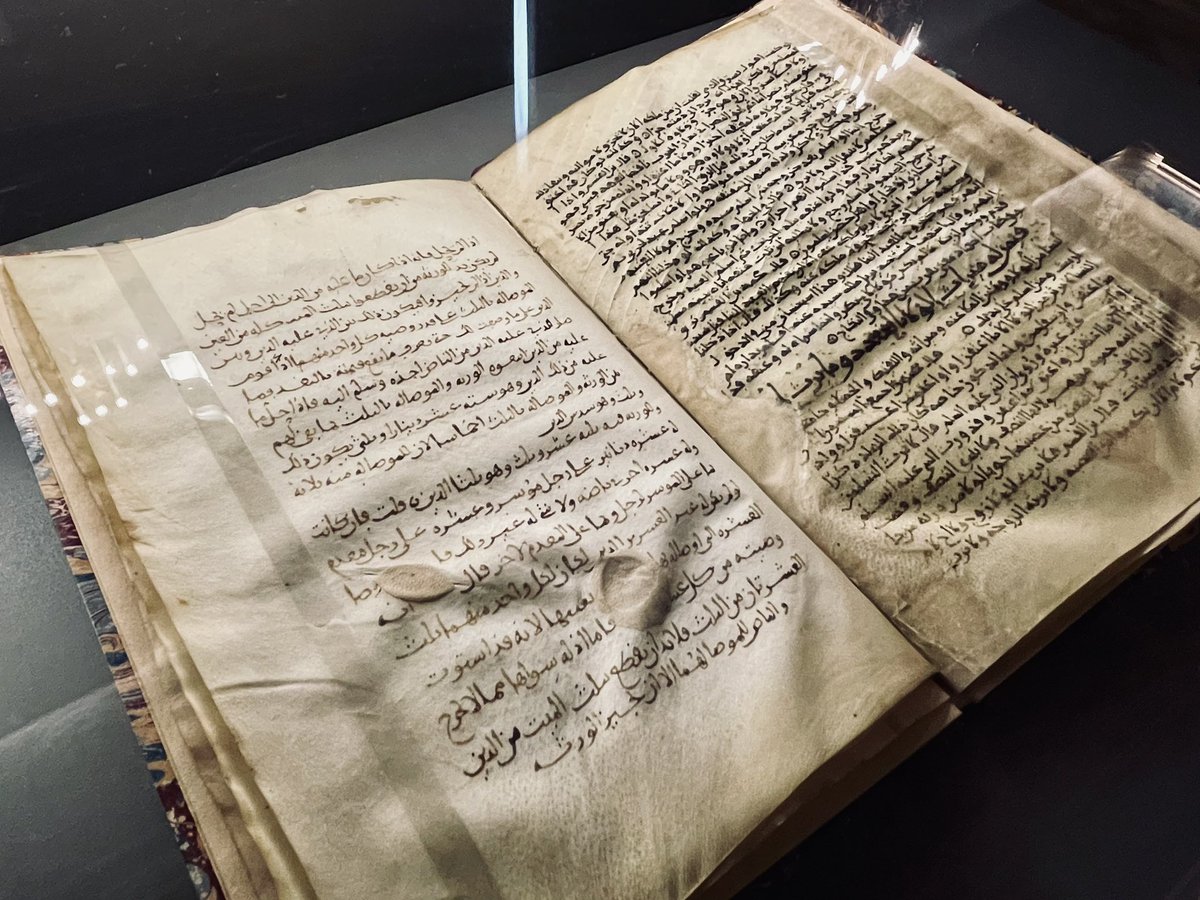Another volume from the magnificent Qur'an manuscript seized by Holy Roman Emperor Charles V during the sack of Tunis in 1535, offered on sale at Sotheby’s!
A thread about its history 🧵1/6
A thread about its history 🧵1/6

2/6. In 1535, the Holy Roman Emperor Charles V (1500-58) conquered the Kingdom of Tunis from the Ottomans. His troops looted the city – the Great Mosque az-Zaytuna and the palace of Hafsid King Mulay Hasan. They seized several copies of the Qurʼan and took them back to Europe. 

3/6. The Qur’an manuscripts taken by Charles V went to his son, King Philip II (d. 1598), who sent them to the Royal Library of the Escorial… One of these is a magnificent mushaf from the Hafsid dynasty, divided into 8 volumes, the one to which the Sotheby's manuscript belonged 

4/6. We know this because three volumes belonging to him were taken by Cardinal Antoine de Granvelle (1517-1586), minister of King Philip II of Spain, and entered his collection – located in Besançon – later inherited by his nephew (see note of vol. 2) 

5/6. The three volumes went into Pierre Séguier's collection, before being bequeathed by his heir, Henri-Charles de Coislin, to the Abbey of Saint-Germain des Près in 1732, and later transferred to the National Library at the end of the century. 

6/6. The Sotheby's manuscript is likely Vol. 3. It has yet to check whether the text is complete, as it has slightly fewer leaves. Sadly, the historical binding has gone.. Then, we cannot check if this volume had followed -for a little while at least- the same path as the others. 

And here is the link to Sotheby's manuscript: sothebys.com/en/buy/auction…
• • •
Missing some Tweet in this thread? You can try to
force a refresh






























